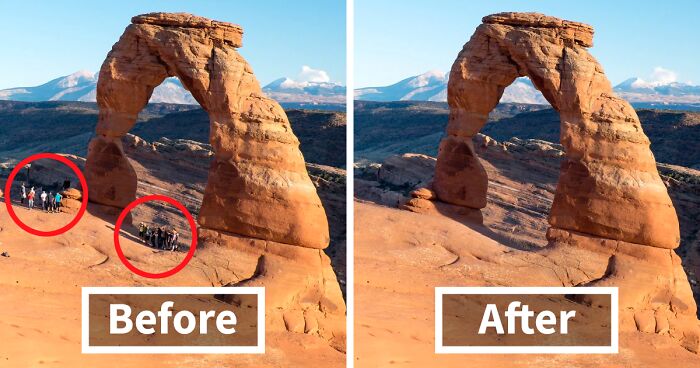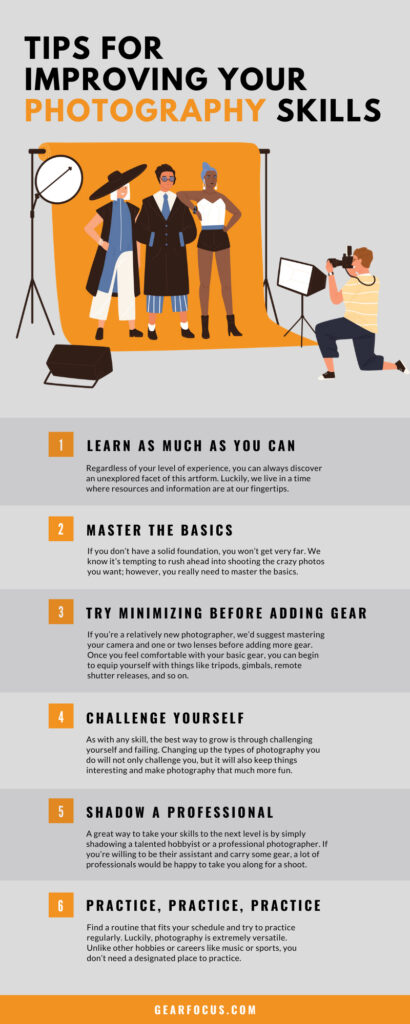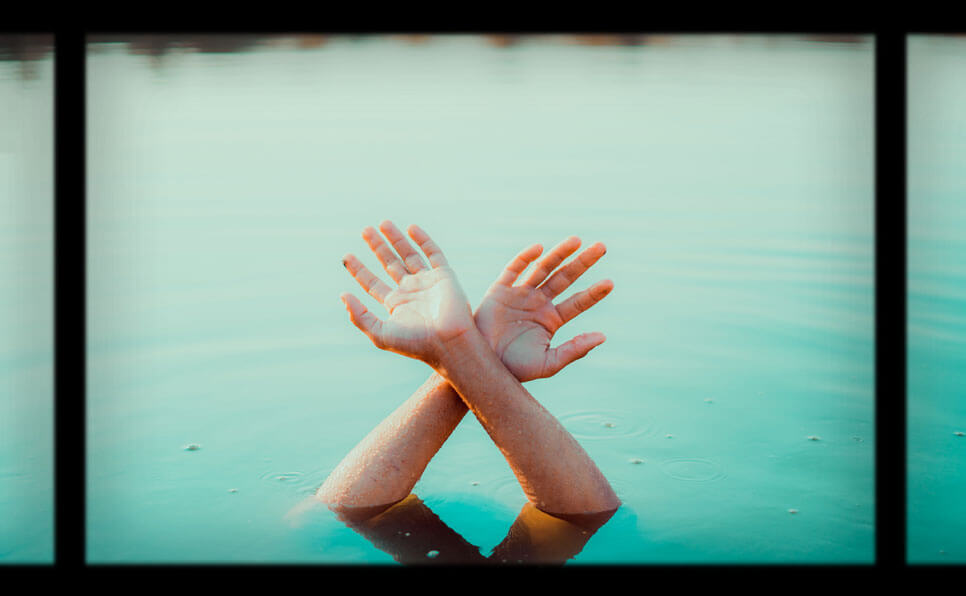Have you ever looked at a stunning photograph and wondered how you could capture something just as breathtaking? If you’re eager to enhance your photography skills and take your pictures from ordinary to extraordinary, you’re in the right place.
Whether you’re a beginner with a smartphone or an enthusiast with a DSLR, there’s always room for improvement. You don’t need to invest in expensive equipment or enroll in a costly course to see results. With a bit of guidance and the right techniques, you can make significant strides. Imagine being able to capture the perfect moment, every time. It’s not just about luck; it’s about understanding the fundamentals of photography. The key to mastering this art lies in grasping the basics of exposure, knowing your camera settings, and applying composition tips effectively. If you’re ready to unlock the secrets of professional photographers, consider exploring resources like the Photography 101: Pocket Guide. This guide is designed to help photographers like you understand the nuances of exposure, lens choices, and shooting scenarios. With this knowledge, you’ll be equipped to transform your snapshots into gallery-worthy images. Stick around as we delve deeper into practical tips that will elevate your photography game to new heights.
Introduction To Mastering Photography Skills
Photography is more than just clicking a button; it’s an art form. Understanding and improving your photography skills can transform ordinary scenes into breathtaking images. Mastering these skills requires patience, practice, and a willingness to learn. Whether you’re a beginner or have some experience, enhancing your abilities will open new creative avenues.
Understanding The Importance Of Photography Skills
Photography skills are crucial for capturing moments with precision and emotion. A well-taken photograph can evoke feelings, tell a story, and preserve memories. Investing time in learning these skills improves the quality of your images. This leads to a deeper appreciation for the art of photography.
Consider these benefits:
- Improved Composition: Learn how to frame shots effectively.
- Better Exposure: Understand lighting and camera settings.
- Creative Expression: Convey emotions through your images.
Overview Of Key Techniques To Master
Several techniques are essential for mastering photography skills. These techniques help photographers take control of their camera and environment. They also enhance the visual appeal of the captured images.
- Exposure Basics: Balancing light and shadow is vital. Adjust your camera settings to achieve the desired effect.
- Camera Settings: Familiarize yourself with ISO, shutter speed, and aperture. These settings influence the image’s clarity and mood.
- Lens Information: Different lenses offer varied perspectives. Choose the right lens for your subject and desired effect.
- Composition Tips: Rule of thirds, leading lines, and symmetry enhance visual interest.
- Shooting Scenarios: Adapt your approach based on the environment and lighting conditions.
To deepen your understanding, consider resources like Photography 101: Pocket Guide. This guide offers insights into exposure, composition, and shooting scenarios. It serves as a handy reference for photographers seeking improvement.

Credit: www.boredpanda.com
Essential Equipment For Photography
Having the right equipment is crucial for capturing stunning photographs. Essential tools help you achieve desired results. Whether you’re a beginner or a seasoned photographer, understanding your gear is key. Below, we’ll explore some critical equipment aspects to consider.
Choosing The Right Camera And Lenses
Choosing a camera is your first step toward great photography. Consider what you will be photographing. For landscapes, a DSLR or mirrorless camera with interchangeable lenses is ideal. A compact camera might suffice for casual snapshots.
Lenses significantly impact your photography. A prime lens offers sharpness and a wide aperture. Zoom lenses provide versatility with variable focal lengths. Ensure the lens matches the camera mount. This avoids compatibility issues.
- Prime lenses for sharp images
- Zoom lenses for versatility
- Check camera-lens compatibility
Understanding Lighting And Accessories
Lighting can transform a photograph from ordinary to extraordinary. Natural light is free and often sufficient. For controlled settings, consider artificial lights like LED panels or flashguns. These provide consistent illumination.
Accessories enhance your photography experience. Tripods stabilize your camera for long exposures. A remote shutter release prevents camera shake. Filters like ND or polarizers can modify lighting effects.
| Accessory | Function |
|---|---|
| Tripod | Stabilizes camera |
| Remote Shutter Release | Prevents shake |
| Filters | Modify lighting |
With the right equipment, you can dramatically improve your photography skills.
Mastering Composition Techniques
Improving photography skills requires understanding composition techniques. These techniques are vital to capturing stunning images. Composition guides your artistic choices, helping create visually appealing photos. Master these techniques to elevate your photography game.
Rule Of Thirds: Creating Balanced Photos
The Rule of Thirds divides an image into nine equal segments. Imagine two vertical and two horizontal lines across your viewfinder. The intersections create four focal points. Place key elements along these lines or at intersections. This approach leads to balanced and harmonious photos.
- Enhances visual interest
- Creates depth and dynamism
- Makes the image more engaging
Leading Lines: Guiding The Viewer’s Eye
Leading Lines are lines that draw the viewer’s eye through the image. They lead to a focal point or create a sense of movement. Roads, fences, or rivers often serve this purpose. They guide the viewer and add structure to your photos.
- Directs attention to the main subject
- Creates a sense of depth
- Enhances storytelling in images
Mastering these techniques will improve your photography skills. Practice regularly to refine your composition. Your photos will become more captivating and professional-looking.

Credit: aaft.com
Exploring Advanced Camera Settings
Diving into advanced camera settings can elevate your photography skills. Understanding and adjusting these settings will give you more control over your images. This section focuses on key aspects that can transform your photos.
Aperture, Shutter Speed, And Iso: The Exposure Triangle
The exposure triangle is fundamental in photography. It consists of aperture, shutter speed, and ISO. Each element affects the light and quality of your photos. Mastering these settings helps balance exposure.
| Element | Function |
|---|---|
| Aperture | Controls the amount of light entering the camera. |
| Shutter Speed | Determines how long the camera shutter stays open. |
| ISO | Adjusts the camera’s sensitivity to light. |
- Aperture: Affects depth of field and brightness.
- Shutter Speed: Influences motion blur and exposure.
- ISO: Balances light sensitivity and image noise.
Mastering Manual Mode For Greater Control
Switching to manual mode gives you total control over your camera. You decide the settings to achieve your desired effect. This mode requires practice but offers rewarding results.
- Set your desired aperture.
- Adjust shutter speed to match the scene.
- Fine-tune ISO based on lighting conditions.
Manual mode allows creative freedom. Experiment with different settings for unique shots. Confidence grows with practice, leading to improved skills.
Post-processing For Professional Finishes
Post-processing is the bridge between capturing and presenting stunning images. It transforms raw photos into polished masterpieces. This process elevates your photography, setting it apart with a professional touch. Understanding photo editing software and mastering color correction are crucial. These skills enhance your images, making them vibrant and flawless.
Introduction To Photo Editing Software
Photo editing software is essential for photographers. Popular choices include Adobe Photoshop and Lightroom. These tools offer a range of features. You can adjust exposure, contrast, and sharpness. They also allow for creative edits, like adding filters or effects. The interface is user-friendly, catering to beginners and pros alike. Understanding the basics of these tools is the first step to enhancing your photos.
Enhancing Images Through Color Correction And Retouching
Color correction breathes life into photos. It adjusts the tones and hues, making colors pop. Retouching removes blemishes and unwanted elements. Together, they refine images, adding clarity and depth. Use tools like curves and levels for precise color adjustments. For retouching, the clone tool and healing brush are ideal. These techniques ensure your images are clean and vibrant, ready for any portfolio.

Credit: ici.net.au
Real-world Application And Practice
Enhancing your photography skills involves more than theoretical knowledge. Real-world application is key. It involves practicing techniques and adapting to different environments. It’s about understanding how your camera works in various scenarios. This practice shapes your perspective and hones your skills.
Developing A Consistent Photography Style
Creating a consistent photography style is crucial. It defines your work and makes it recognizable. Start by identifying your favorite subjects and themes. Experiment with different angles and lighting. Analyze your photos and note what works best. This process helps in forming a unique style.
Key Elements:
- Subject Choice: Select subjects that resonate with you.
- Lighting: Master different lighting techniques.
- Composition: Focus on composition principles.
- Editing: Develop a signature editing approach.
Building A Portfolio To Showcase Your Skills
A strong portfolio is essential for showcasing your skills. It acts as your visual resume. Select your best work and organize it effectively. Highlight different techniques and styles to show versatility. Include various themes to attract diverse audiences.
Portfolio Tips:
- Selection: Choose high-quality images.
- Variety: Display a range of subjects.
- Layout: Maintain a clean and organized layout.
- Description: Add brief descriptions for context.
Consider using a table to organize your portfolio sections:
| Category | Description |
|---|---|
| Portraits | Captures of individual expressions. |
| Landscapes | Images of breathtaking sceneries. |
| Street Photography | Life captured in urban settings. |
Pricing And Affordability Of Photography Tools
Photography is a wonderful art form that captures moments and emotions. The journey to improve your photography skills often involves investing in various tools. Understanding the pricing and affordability of these tools is crucial. This knowledge helps you make informed decisions without breaking the bank.
Breaking Down Costs Of Essential Equipment
Essential photography equipment includes a camera, lenses, tripod, and lighting gear. Cameras vary in price, depending on features and brand. Entry-level DSLR cameras start around $300, while high-end models can exceed $2000.
Lenses are another significant investment. A basic lens might cost $100, whereas professional lenses can be $1000 or more. Tripods and lighting gear also vary in price but are generally more affordable.
| Equipment | Price Range |
|---|---|
| Camera | $300 – $2000+ |
| Lenses | $100 – $1000+ |
| Tripods | $20 – $200 |
| Lighting Gear | $30 – $500 |
Affordable Alternatives For Beginners
Beginners can opt for more affordable alternatives to start their photography journey. Consider purchasing a used camera. Many enthusiasts sell their gently used equipment at a fraction of the original cost.
Smartphones are also a viable option for beginners. Modern smartphones come equipped with high-quality cameras. They allow you to practice composition and exposure without a hefty investment.
- Buy used cameras to save money.
- Utilize smartphone cameras for practice.
- Rent equipment to test before purchasing.
Online resources and guides, like the Photography 101: Pocket Guide, can provide valuable insights. They offer exposure basics, camera settings, and composition tips.
These resources help beginners learn and grow without spending much. Being mindful of costs ensures a sustainable photography journey.
Pros And Cons Of Different Photography Techniques
Photography offers diverse techniques, each with unique advantages and limitations. Understanding these nuances can enhance your skills and creativity. From traditional methods to modern innovations, photographers explore various approaches to capture stunning images.
Benefits And Challenges Of Digital Vs. Analog Photography
Digital Photography provides convenience and flexibility. Instant review and editing allow photographers to perfect their shots. Key benefits include:
- Immediate feedback through previews
- Efficient storage and sharing
- Advanced editing capabilities
Yet, digital photography demands technical expertise. Challenges include:
- High initial equipment costs
- Complex camera settings
- Reliance on power sources
Analog Photography, rooted in tradition, offers a distinct aesthetic. Benefits include:
- Unique film textures
- Enhanced focus on composition
- Limited equipment dependency
Challenges arise from its analog nature:
- Costly film and development
- Limited instant feedback
- Complex manual processes
Evaluating Various Editing Styles
Editing styles shape the final image, reflecting the photographer’s vision. Popular styles include:
- Minimalist Editing: Focuses on natural beauty. Enhances colors and sharpness without overwhelming.
- Vintage Style: Adds nostalgia. Uses soft tones and grain to evoke a timeless feel.
- High Contrast Editing: Boosts drama. Utilizes bold contrasts and vibrant colors to create impact.
Each style has distinct benefits:
| Style | Benefits | Challenges |
|---|---|---|
| Minimalist | Natural, clean aesthetics | Risk of blandness |
| Vintage | Creates emotional depth | Can appear outdated |
| High Contrast | Captivating and bold | May overwhelm details |
Choosing the right editing style enhances image storytelling. Consider the scene and desired impact.
Recommendations For Aspiring Photographers
Photography is a rewarding art form. Yet, starting can feel overwhelming. Aspiring photographers seek guidance to enhance their skills. Here are some recommendations to help you improve. Practice and patience are key. Use these tips to boost your confidence and creativity.
Ideal Scenarios For Practicing Different Techniques
Identifying ideal scenarios is crucial for skill development. Different techniques require distinct environments. Here are some examples:
- Golden Hour: Perfect for practicing lighting. The soft light enhances portraits and landscapes.
- Busy Streets: Capture candid moments. Improve your timing and composition.
- Low Light: Experiment with night photography. Adjust your camera settings to capture stunning images.
- Nature Walks: Practice macro photography. Focus on details like flowers or insects.
These scenarios provide diverse learning opportunities. They help refine your skills and expand your creative vision.
Tailored Advice For Different Photography Genres
Different genres demand unique approaches. Here’s tailored advice for various photography styles:
| Genre | Advice |
|---|---|
| Portrait | Focus on expressions. Use shallow depth of field for dramatic effects. |
| Landscape | Include foreground elements. They add depth and interest. |
| Wildlife | Be patient. Use a telephoto lens for close-up shots. |
| Street | Blend in with the environment. Capture spontaneous interactions. |
Each genre has unique challenges. Understanding these nuances enhances your photography journey.
For more guidance, explore resources like the Photography 101: Pocket Guide. It offers exposure basics, camera settings, and shooting scenarios. Check it out on Amazon.
Frequently Asked Questions
Can You Improve Your Photography Skills?
Yes, you can improve your photography skills. Practice regularly and experiment with different techniques. Take online courses, read photography books, and watch tutorials. Join photography groups for feedback and inspiration. Analyze professional photos to understand composition and lighting. Stay updated with the latest photography trends and equipment.
What Is The 100 Rule In Photography?
The 100 rule in photography suggests using a shutter speed of 1/100th of a second or faster. This helps reduce blur caused by camera shake, ensuring sharper images. It’s especially useful for handheld shots in low light conditions. Adjust settings based on your camera and lighting.
How To Get Better As A Photographer?
Improve photography skills by practicing regularly. Study composition and lighting techniques. Experiment with different styles and settings. Analyze your work critically and seek feedback. Stay updated with photography trends and tools.
How To Improve Photography Quality?
Enhance photography quality by using proper lighting and a high-resolution camera. Adjust settings for sharper images. Use a tripod to stabilize shots. Edit photos using software like Adobe Lightroom. Practice consistently to refine skills and develop a unique style.
Conclusion
Improving your photography skills takes time and practice. Keep exploring new techniques. Experiment with different camera settings. Capture diverse subjects to hone your skills. Remember, learning never stops. For more guidance, consider the Photography 101 Pocket Guide. It’s a handy resource for photographers. Packed with tips on exposure and composition. Embrace your passion for photography. Keep capturing beautiful moments. Enjoy the journey.



